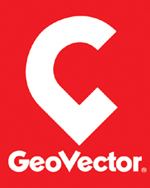Founded 1993 | Website www.geovector.com | |
 | ||
Headquarters San Francisco, CA, United States | ||
1995 augmented reality concepts from geovector corp
GeoVector Corporation (originally named Criticom Corporation) began conducting research into augmented reality in early 1990s. The company, co-founded by John Ellenby, who also founded laptop pioneer GRiD Systems Corporation, devised a method to use sensors in a device to associate relevant digital information with places on earth.
Contents
- 1995 augmented reality concepts from geovector corp
- Geovector click on the real world
- Milestones and events
- References
The basic concept around which most of GeoVector's R&D has focused is that knowing the position and orientation of the device allows the application to provide digital information associated with a place in the real world. Position and direction data can be used to create a virtual vector which intersects with objects indexed in databases by their latitude and longitude coordinates.
GeoVector's first patent in this domain, since issued as 5,815,411, was filed September 10, 1993. The company originally held the trademark for "Augmented Reality" (issued in 1995) but abandoned it as the term was generally adopted to describe this technique.
Early GeoVector work focused on providing vertical solutions. One GeoVector augmented reality design used compass equipped binoculars along with GPS to superimpose nautical maps on the visual horizon thus improving the safety of navigation.
A video showing early Augmented Reality concepts from GeoVector can be seen here
GeoVector then discovered that their basic technology would improve the user experience on handheld devices delivering location aware applications. In this instance, actually viewing the real object was not necessary. Simply being able to refine the search for location information by knowing the direction of user interest or the specific object of his attention would be a significant benefit. The GeoVector team then implemented what they now refer to as the "pointing" feature.
In 1998, "Clipper" project was initiated. The company built a prototype device known internally as The "Little Guy", a handheld "pointable" information appliance independent of a visual or video element. Since that time GeoVector has worked closely with sensor and device manufactures to encourage them to include GPS and compass elements in their products. In early 2006, there were sufficient pointing capable handsets in Japan for GeoVector to launch its first commercial product on the KDDI network with support of local partners NECM and Mapion.
A video showing the functionality of Pointing is on YouTube.
The company has continued its research and development in directional searching and augmented reality and has been awarded several patents in those areas. Further information about their intellectual property can be found on line at their website patent gallery.
